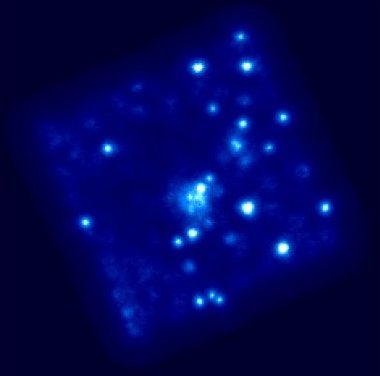A mystery that has been haunting the fields of physics and cosmology has just grown deeper. Dark energy, that stealthy ghost that lurks in the shadows of the universe, is now believed by most scientists to be a strange but significant occupant of the cosmos, an unidentified antigravity that is stretching the very fabric of space. In fact, all the evidence — beginning in 1998 with the discovery of the universe’s accelerating expansion — has added up to an unsettling cosmic recipe: 4 percent ordinary matter, 23 percent dark matter, and 73 percent dark energy. But now, a recent X-ray survey of distant galaxy clusters suggests that perhaps dark energy is not the secret ingredient after all.
Using the European Space Agency’s XMM-Newton space observatory, a team led by Alain Blanchard of the Astrophysics Laboratory of the Midi-Pyrénées Observatory in France found galactic clusters whose distance corresponds to nearly halfway back toward the beginning of time. Composed of hundreds or thousands of galaxies, clusters form over billions of years as gravity pulls matter together. But roughly five billion years ago, dark energy became the dominant force in the universe, expanding space and rendering it ever more difficult for gravity to sculpt its masterworks.
As dark energy dilutes the matter, galaxy clusters should become fewer and farther between. So when Blanchard’s team surveyed clusters that predate the onset of dark energy, they should have found many more than exist today. Instead, they found significantly fewer — suggesting that matter has continued to gravitationally coalesce over time, that there is four times as much dark matter as previously believed, and that dark energy is nothing more than a fantastic illusion.
If dark energy is vanquished by these recent observations, cosmologists will have to rethink the perplexing universe they’ve grown to know and love. But if dark energy holds strong, the new data begs for explanation. Perhaps astronomers don’t fully understand the behavior of galaxy clusters. Or perhaps this particular survey is not representative of the average number of clusters in the young universe. “Our measurement is consistent with Chandra’s previous measurements,” explains Blanchard, “but given the importance of the subject we may still consider that the study comprises too limited a number of clusters. We need more accurate data with good statistical samples.”











